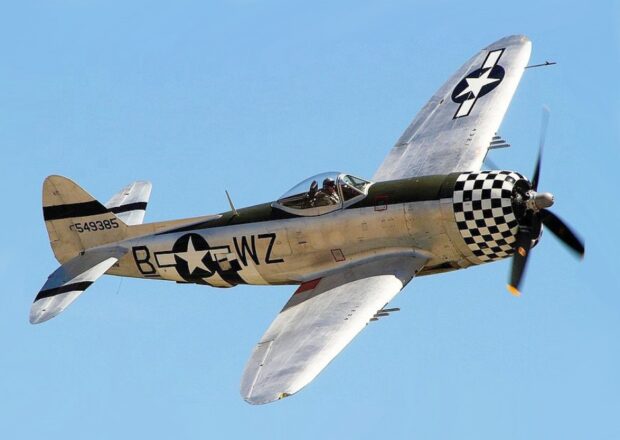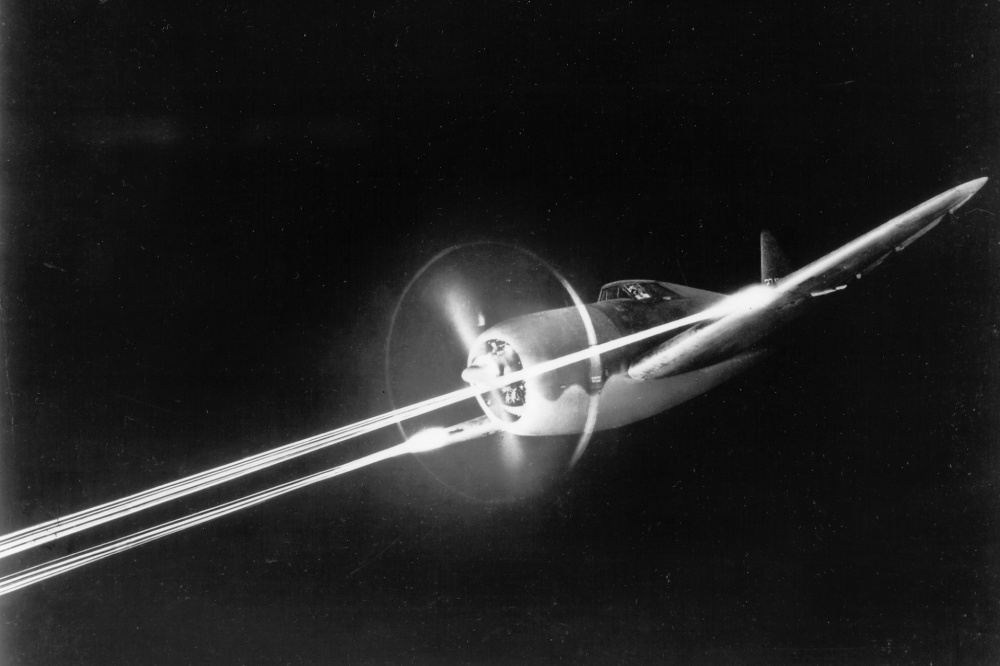The P-47 Thunderbolt is one of the most recognisable US fighter planes from the Second World War. After the United States joined the war, pilots from the US Army Air Force were sent to Britain to aid in the war effort, along with their trusty Thunderbolts.
Used in every major theatre of the war, the Thunderbolt was loved by its pilots – and feared by its enemies – for its deadly combination of high firepower and bomb-carrying capabilities. Nicknamed the ‘Jug’, the P-47 would destroy over 7,000 enemy aircraft during the war.
In this video, our expert Graham Rodgers walks us through the history and technical aspects of this iconic aircraft.
The Republic P-47 Thunderbolt is a World War II-era fighter aircraft produced by the American company Republic Aviation from 1941 through 1945. It was a successful high-altitude fighter, and it also served as the foremost American fighter-bomber in the ground-attack role. Its primary armament was eight .50-caliber machine guns, and it could carry 5-inch rockets or a bomb load of 2,500 lb (1,100 kg). When fully loaded, the P-47 weighed up to 8 tons, making it one of the heaviest fighters of the war.
The Thunderbolt was effective as a short- to medium-range escort fighter in high-altitude air-to-air combat and ground attack in both the European and Pacific theaters. The P-47 was designed around the powerful Pratt & Whitney R-2800 Double Wasp 18-cylinder radial engine, which also powered two U.S. Navy/U.S. Marine Corps fighters, the Grumman F6F Hellcat and the Vought F4U Corsair. An advanced turbosupercharger system ensured the aircraft’s eventual dominance at high altitudes, while also influencing its size and design.
The P-47 was one of the main United States Army Air Forces (USAAF) fighters of World War II. It also served with other Allied air forces, including those of France, the United Kingdom, and the Soviet Union. Mexican and Brazilian squadrons.
The armoured cockpit was relatively roomy and comfortable and the bubble canopy introduced on the P-47D offered good visibility. Nicknamed the “Jug” owing to its appearance if stood on its nose, the P-47 was noted for its firepower and its ability to resist battle damage and remain airworthy. A present-day U.S. ground-attack aircraft, the Fairchild Republic A-10 Thunderbolt II, takes its name from the P-47.
Top Photo: P47 Thunderbolt – Chino Airshow 2014
Sources: Wikipedia; YouTube


